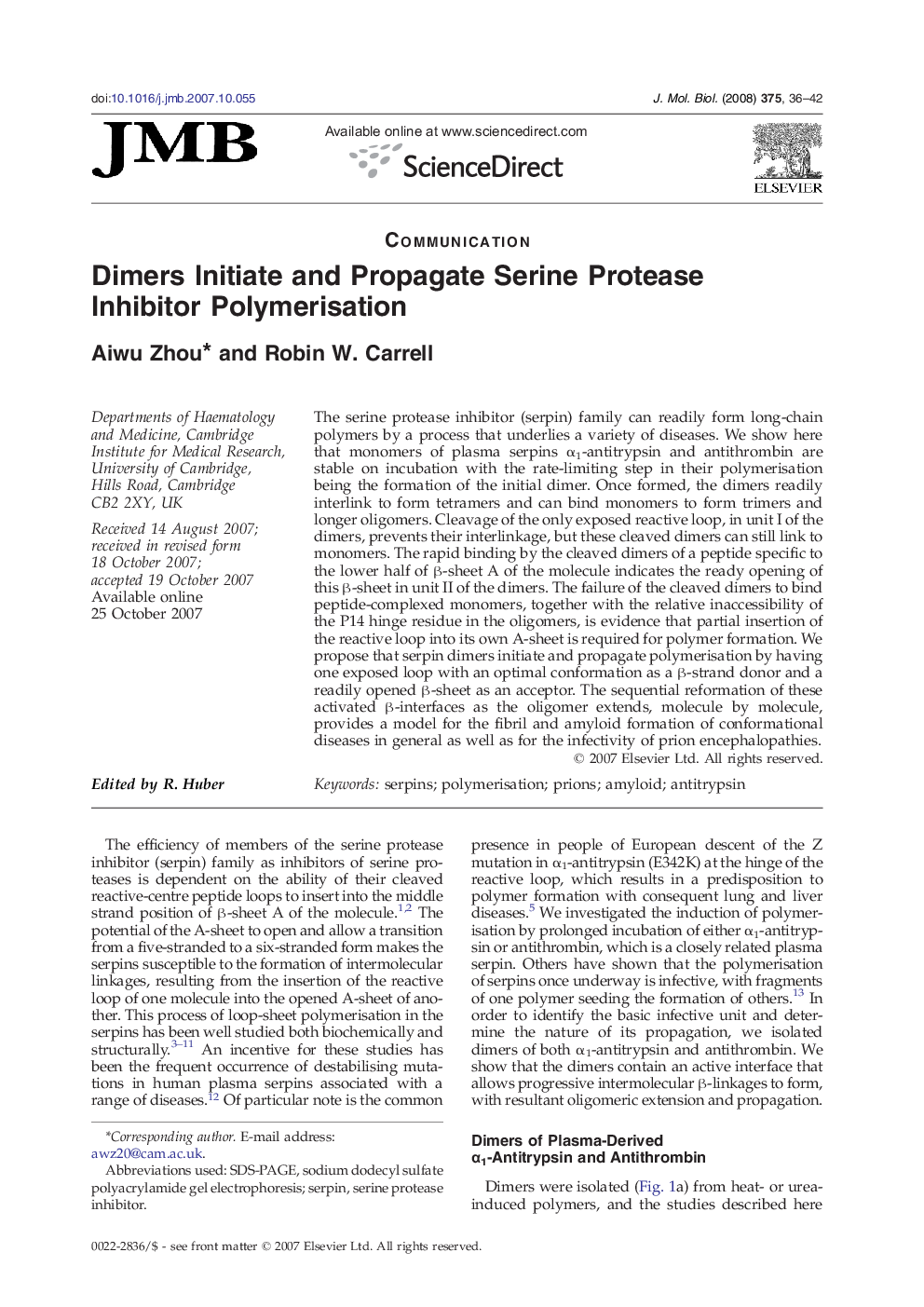| کد مقاله | کد نشریه | سال انتشار | مقاله انگلیسی | نسخه تمام متن |
|---|---|---|---|---|
| 2188029 | 1096150 | 2008 | 7 صفحه PDF | دانلود رایگان |

The serine protease inhibitor (serpin) family can readily form long-chain polymers by a process that underlies a variety of diseases. We show here that monomers of plasma serpins α1-antitrypsin and antithrombin are stable on incubation with the rate-limiting step in their polymerisation being the formation of the initial dimer. Once formed, the dimers readily interlink to form tetramers and can bind monomers to form trimers and longer oligomers. Cleavage of the only exposed reactive loop, in unit I of the dimers, prevents their interlinkage, but these cleaved dimers can still link to monomers. The rapid binding by the cleaved dimers of a peptide specific to the lower half of β-sheet A of the molecule indicates the ready opening of this β-sheet in unit II of the dimers. The failure of the cleaved dimers to bind peptide-complexed monomers, together with the relative inaccessibility of the P14 hinge residue in the oligomers, is evidence that partial insertion of the reactive loop into its own A-sheet is required for polymer formation. We propose that serpin dimers initiate and propagate polymerisation by having one exposed loop with an optimal conformation as a β-strand donor and a readily opened β-sheet as an acceptor. The sequential reformation of these activated β-interfaces as the oligomer extends, molecule by molecule, provides a model for the fibril and amyloid formation of conformational diseases in general as well as for the infectivity of prion encephalopathies.
Journal: Journal of Molecular Biology - Volume 375, Issue 1, 4 January 2008, Pages 36–42